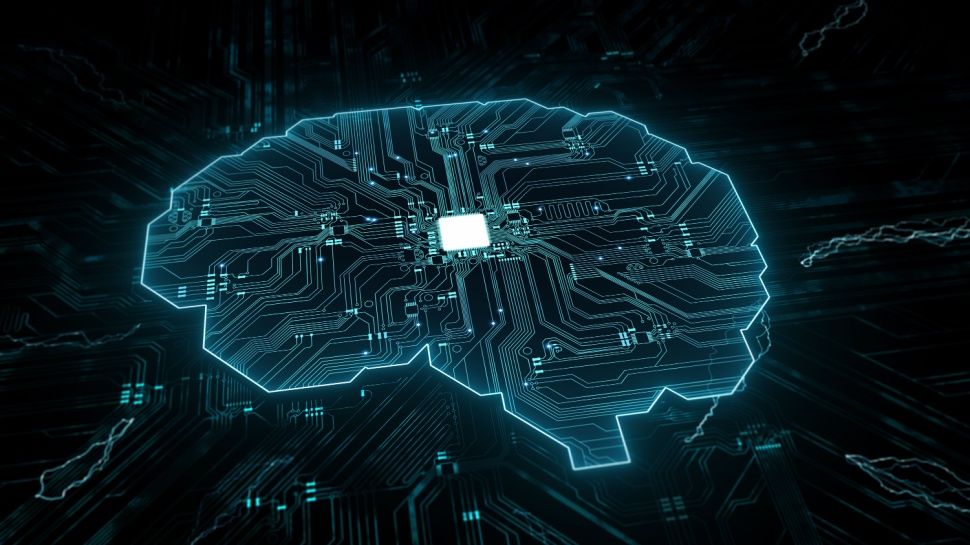AI has significantly enhanced the capabilities of cybersecurity systems by enabling more sophisticated and proactive defense mechanisms. The ability of AI systems to learn from vast datasets and adapt to new threats in real-time has created a more dynamic and resilient security environment. By continuously analyzing patterns and anomalies, AI can identify potential threats more accurately and efficiently than traditional methods.
This technological leap forward has made it possible to prevent cyber-attacks before they can cause significant damage. For example, AI-powered security solutions like Darktrace use machine learning to autonomously detect and respond to cyber threats across digital environments, stopping potential breaches in their tracks. Similarly, IBM’s Watson for Cyber Security analyses vast amounts of data and cross-references it with known threats, helping security teams quickly identify and mitigate risks.
However, with these advancements come two major concerns. The first is the safety of AI design and coding. It is crucial to ensure that AI systems are developed with robust safety protocols to avoid errors and unintended consequences. Poorly designed AI can lead to security vulnerabilities that malicious actors could exploit. For instance, in 2020, the Clearview AI facial recognition system, which was used by law enforcement agencies, faced a massive data breach due to poor security practices, exposing sensitive information to potential misuse. Therefore, the development of AI must prioritize safety and error prevention to protect human users and systems.
The second concern revolves around control and oversight. As AI systems become more autonomous, understanding who controls these systems and their capacity to be switched off in emergencies becomes increasingly important. The potential misuse of AI, especially in cybersecurity, poses significant risks. For instance, if an AI system were to fall into the wrong hands, it could be used for malicious purposes, such as launching cyber-attacks or manipulating information.
These challenges underscore the need for a comprehensive approach to cybersecurity that includes AI security. The focus must extend beyond technical aspects to encompass the human impact and safety considerations. Governments worldwide have recognised the implications of AI in cybersecurity, leading to numerous AI safety summits, such as the one held at Bletchley Park in 2023. These events highlight the growing awareness and urgency to address AI’s role in cybersecurity.
Patron of The National Museum of Computing at Bletchley Park and Founder of the National AI Awards.
Highlighting the role of quantum computing
As we look to the future, the convergence of AI and quantum computing is set to bring about even more significant changes to the cybersecurity landscape. Quantum computing, which harnesses the principles of quantum mechanics, has the potential to process information at unprecedented speeds. Although quantum computing is still in its early stages and not yet commercially viable, this is likely to change as major corporations like IBM continue investing heavily in its development. With these advancements, quantum computing could revolutionize cybersecurity by enabling AI to analyze data and solve complex problems faster than ever before. However, even with today’s advanced computing power and global networks, ensuring AI safety remains a primary concern.
One of the most current concerns is the potential for quantum computers to render current encryption methods obsolete. This could open the door for malicious actors to decrypt sensitive data, including financial transactions, intellectual property, and national security secrets. As a result, there’s a growing urgency to develop quantum-resistant cryptographic algorithms that can withstand the computational power of quantum machines. Therefore, the focus on safety and regulation must remain a priority as we navigate this new frontier. The potential impact of quantum computing on AI and cybersecurity is immense, but it also highlights the need for ongoing vigilance and adaptation. As AI systems become more powerful, the cybersecurity industry must evolve to keep pace with these developments, ensuring that robust defenses and ethical considerations are in place.
The need for greater cohesion and maturity in the industry
Given the rapid advancements in AI and the potential threats they pose, the cybersecurity industry must develop greater cohesion and maturity. This need extends to all aspects of cybersecurity, from online safety and the defense of critical national infrastructure to the development of offensive capabilities. To achieve this, there must be a strong partnership between governments, international regulators, and big data companies. This collaboration should prioritize the greater good over profit, ensuring that cybersecurity measures are comprehensive, effective, and aligned with ethical standards.
The threat of cyber warfare, where AI is used as a weapon, highlights the urgent need for stronger regulations and controls. In the UK, this is particularly important as we continue to face growing cyber threats from both state and non-state actors. As AI technology advances, there is also the potential for it to reach a point where it could make decisions without human input, known as singularity. If we do not establish clear guidelines and oversight now, the misuse of AI in cybersecurity could lead to disastrous outcomes, including large-scale data breaches, infrastructure attacks, or other harmful actions. Ensuring proper regulation is crucial to protect the UK’s digital infrastructure and its citizens from these evolving threats. To foster greater cohesion and maturity in the industry, stakeholders must work together to develop and enforce legislation and controls that address the unique challenges posed by AI and cyber threats. This includes creating frameworks for international cooperation and establishing norms for the ethical use of AI in cybersecurity. Events such as the National Cyber and AI Awards play a crucial role in promoting industry standards by recognizing companies and individuals who demonstrate excellence and innovation in cybersecurity and AI. Such awards not only celebrate achievements but also encourage the development of best practices and the sharing of knowledge across the industry, helping to drive progress and foster a culture of responsibility and collaboration.
Challenges of regulating a fast-moving sector
Regulating the rapidly evolving AI and cybersecurity industry presents several challenges, particularly given its global nature and the diverse interests of various stakeholders. Geo-political considerations often complicate efforts to establish uniform regulations, as different countries may have varying priorities and approaches to AI and cybersecurity. This lack of consensus can hinder progress and leave gaps in the global security framework.
In addition, as we progress through the digital revolution, the absence of regulation can lead to AI being used for economic gain, political power, or as a disruptive force. For example, without proper oversight, AI could be exploited to manipulate markets, influence elections, or even launch cyber-attacks against critical infrastructure.
Another significant challenge lies in the ethical implications of AI, particularly in areas like bioengineering, where AI is used to enhance physical and mental capabilities. As we integrate AI into our bodies and minds, the ethical considerations become even more complex. In the midst of this, it is vital to ensure that these technologies are used responsibly and do not compromise our independence or well-being.
To address these challenges, the industry must prioritize regulation and ethical considerations alongside technological advancements. This includes fostering international cooperation to develop standards that ensure the responsible use of AI in cybersecurity. By doing so, we can mitigate the risks associated with rapid technological change and create a safer, more secure digital future.
Looking at the future
As we navigate the rapidly evolving landscape of AI, it is crucial to prioritize safety, regulation, and ethical considerations. By fostering greater cohesion and maturity in the industry and addressing the challenges of regulation, we can harness the full potential of AI while safeguarding against its risks. The future of cybersecurity depends on our ability to adapt and innovate responsibly, ensuring that AI serves as a force for good in the digital age.
We’ve featured the best IT infrastructure management service.
This article was produced as part of TechRadarPro’s Expert Insights channel where we feature the best and brightest minds in the technology industry today. The views expressed here are those of the author and are not necessarily those of TechRadarPro or Future plc. If you are interested in contributing find out more here:






